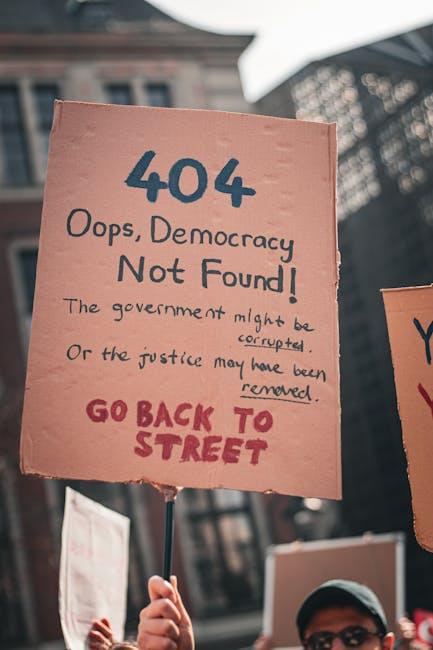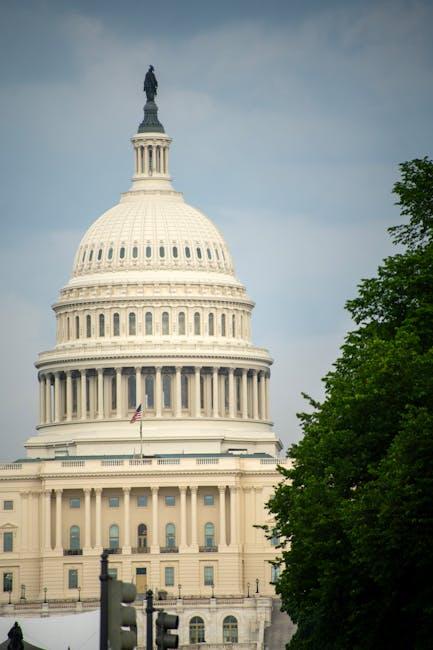Behind the glossy facades of capitol buildings and the polished halls of power, a quieter drama unfolds—one that shapes policies, sways decisions, and ultimately touches the lives of millions. Political lobbying, often veiled in secrecy and conducted far from the public eye, operates as a potent force behind closed doors. This intricate dance between influence and governance sends ripples through societies, economies, and democracies alike. In this exploration, we delve beyond the headlines to understand how lobbying molds the political landscape, revealing a complex web of intentions and consequences that extend far beyond the chambers where they begin.
Table of Contents
- The Invisible Influence on Policy Making
- Unveiling the Consequences for Public Trust
- Strategies for Transparent and Accountable Lobbying
- Empowering Citizens through Informed Engagement
- Closing Remarks

The Invisible Influence on Policy Making
In the shadows of legislative chambers and committee rooms, a complex dance unfolds—one that rarely makes headlines but profoundly shapes the policies governing our lives. Influencers with deep pockets and well-oiled communication channels employ strategic pressure techniques that often escape public scrutiny. These unseen forces manipulate narratives, frame legislative priorities, and quietly pivot the direction of national decisions. Their reach extends far beyond simple campaign contributions; it encompasses intricate networks of relationships, revolving doors between government and industry, and subtle, persistent messaging campaigns designed to nudge policies toward their favored outcomes.
The mechanism of this influence can be better understood through the following elements that frequently operate behind the scenes:
- Strategic Advocacy: Crafting tailored arguments that resonate emotionally and logically with policymakers.
- Information Gatekeeping: Controlling what data reaches decision-makers, often highlighting certain facts while obscuring others.
- Policy Framing: Reframing debates to align with lobbyist goals and public perception.
- Coalition Building: Uniting diverse interest groups under common policy objectives to amplify their voice.
| Aspect | Invisible Influence Tactic | Impact |
|---|---|---|
| Legislative Hearings | Exert behind-the-scenes pressure on witnesses | Skews testimony to favor specific outcomes |
| Research Funding | Support selective studies aligned with agenda | Biases the scientific narrative under consideration |
| Public Relations | Launch targeted media campaigns | Shapes public opinion and policymaker perception |

Unveiling the Consequences for Public Trust
When political lobbying operates behind the scenes, the erosion of public trust often follows an invisible but unmistakable path. Citizens, feeling sidelined from the decision-making process, begin to question the integrity of their leaders and the fairness of policies enacted. This skepticism isn’t merely a sidebar; it can trigger widespread disillusionment, leading to decreased voter turnout, heightened cynicism, and a general sense of detachment from democratic participation.
- Perceived favoritism: When lobbyists heavily influence legislation, the public suspects undue advantage for special interests.
- Opaque processes: Lack of transparency fuels speculation about hidden agendas and backdoor deals.
- Accountability gaps: Citizens struggle to hold elected officials responsible amid the webs of lobbying influence.
| Trust Indicator | Before Lobbying Impact | After Lobbying Impact |
|---|---|---|
| Confidence in Government | 65% | 38% |
| Belief in Fairness | 70% | 42% |
| Willingness to Vote | 75% | 50% |
To rebuild this fractured trust, governments and institutions must prioritize transparency measures that illuminate lobbying activities and empower citizens with clear information. Transparent practices—not just rhetorical promises—foster a climate where public confidence can be gradually restored, reaffirming the core democratic principle that governance should serve the many, not just the few with the loudest voices.

Strategies for Transparent and Accountable Lobbying
Ensuring the integrity of lobbying demands a multifaceted approach that emphasizes openness and ethical conduct. Transparency can be enhanced by mandatory disclosure laws requiring lobbyists to publicly report their clients, expenditures, and meeting details. Additionally, fostering a culture of accountability involves independent oversight bodies empowered to monitor compliance, investigate infractions, and enforce penalties. Empowering citizens with access to lobbying registries and real-time updates promotes informed public engagement and diminishes the space for covert influence.
Practical strategies include creating stringent codes of conduct that all actors must follow, emphasizing conflicts of interest and the prohibition of undue gifts or favors. Technology plays a crucial role by offering platforms that aggregate lobbying data, making it searchable and understandable for average citizens. Below is a snapshot of key elements underpinning transparent lobbying:
| Element | Description | Impact |
|---|---|---|
| Disclosure | Publishing detailed lobbying reports | Boosts public scrutiny |
| Oversight | Independent regulatory bodies | Ensures rule enforcement |
| Ethical Codes | Clear behavioral guidelines | Reduces conflicts of interest |
| Public Access | Accessible lobbying databases | Promotes transparency |

Empowering Citizens through Informed Engagement
Informed engagement transforms passive observers into active participants in the political landscape. When citizens understand the mechanisms of lobbying—who influences decision-making and how policies are shaped—they gain the power to hold elected officials accountable. This awareness cultivates a more transparent democracy where voices are not drowned by the echo of closed-door negotiations. True empowerment lies in recognizing the interplay between lobbying efforts and public interest, enabling communities to advocate for change with clarity and conviction.
To foster this engagement, consider these essential steps:
- Educate yourself on lobbying practices and the key players involved.
- Track legislative developments through accessible government portals and trusted news outlets.
- Participate in public forums and consultations to voice concerns directly.
- Collaborate with advocacy groups to amplify collective influence.
| Engagement Activity | Impact | Frequency |
|---|---|---|
| Petition Signing | Raises awareness Signals public opinion |
Occasional |
| Town Hall Attendance | Direct dialogue Informs decision makers |
Regular |
| Policy Research | Increases knowledge Supports advocacy |
Ongoing |
Closing Remarks
As the curtains draw on the intricate dance of power and persuasion, one truth remains clear: political lobbying is a force that reverberates far beyond the halls of government. Its ripples touch every corner of society—shaping policies, influencing decisions, and molding the very fabric of governance. Understanding this hidden dynamic empowers citizens to engage more thoughtfully with the political process, reminding us all that behind every closed door lies a story worth uncovering. In the end, the true power of democracy may rest not just in who whispers in the corridors, but in who listens, questions, and acts in response.



